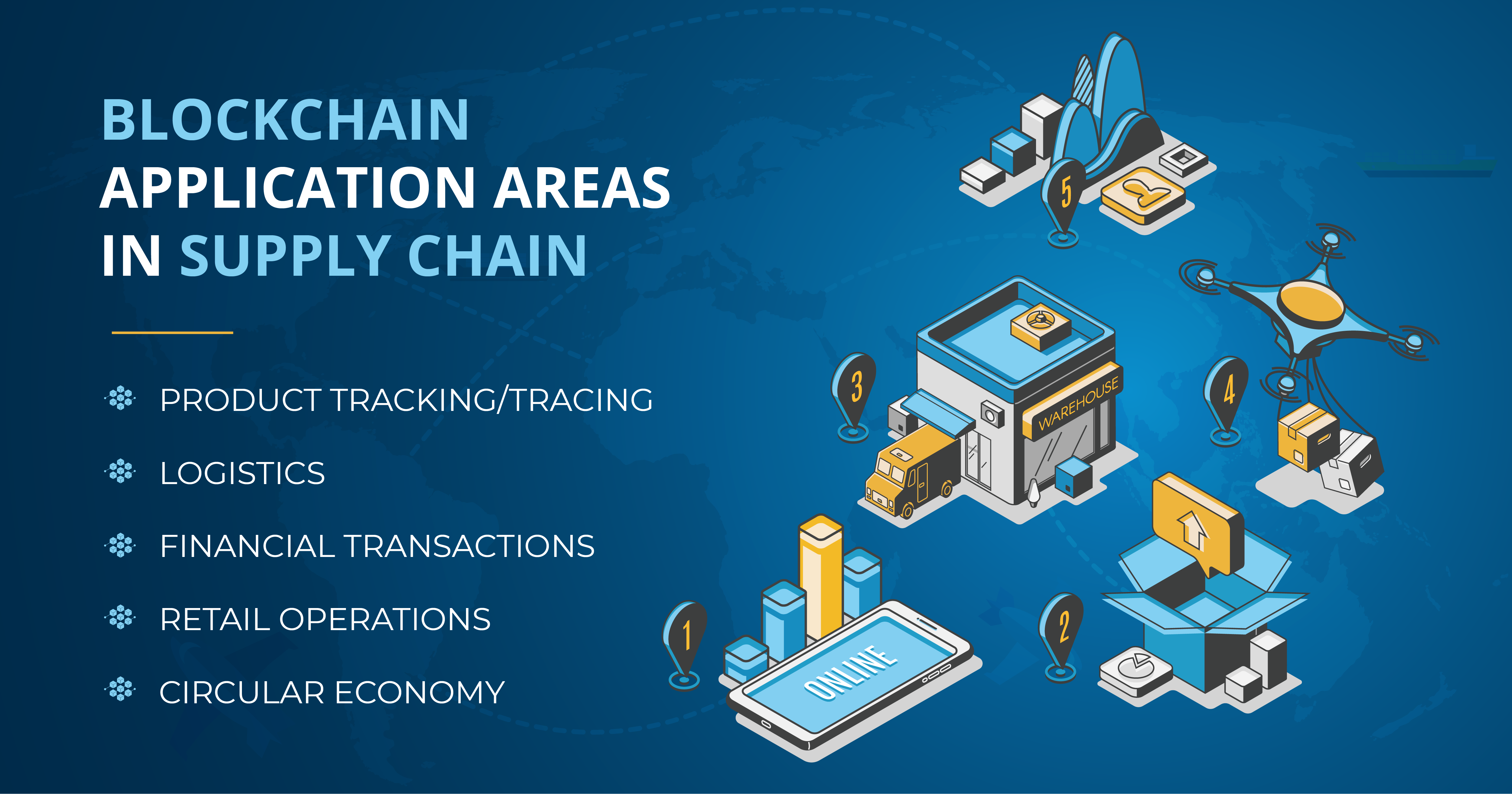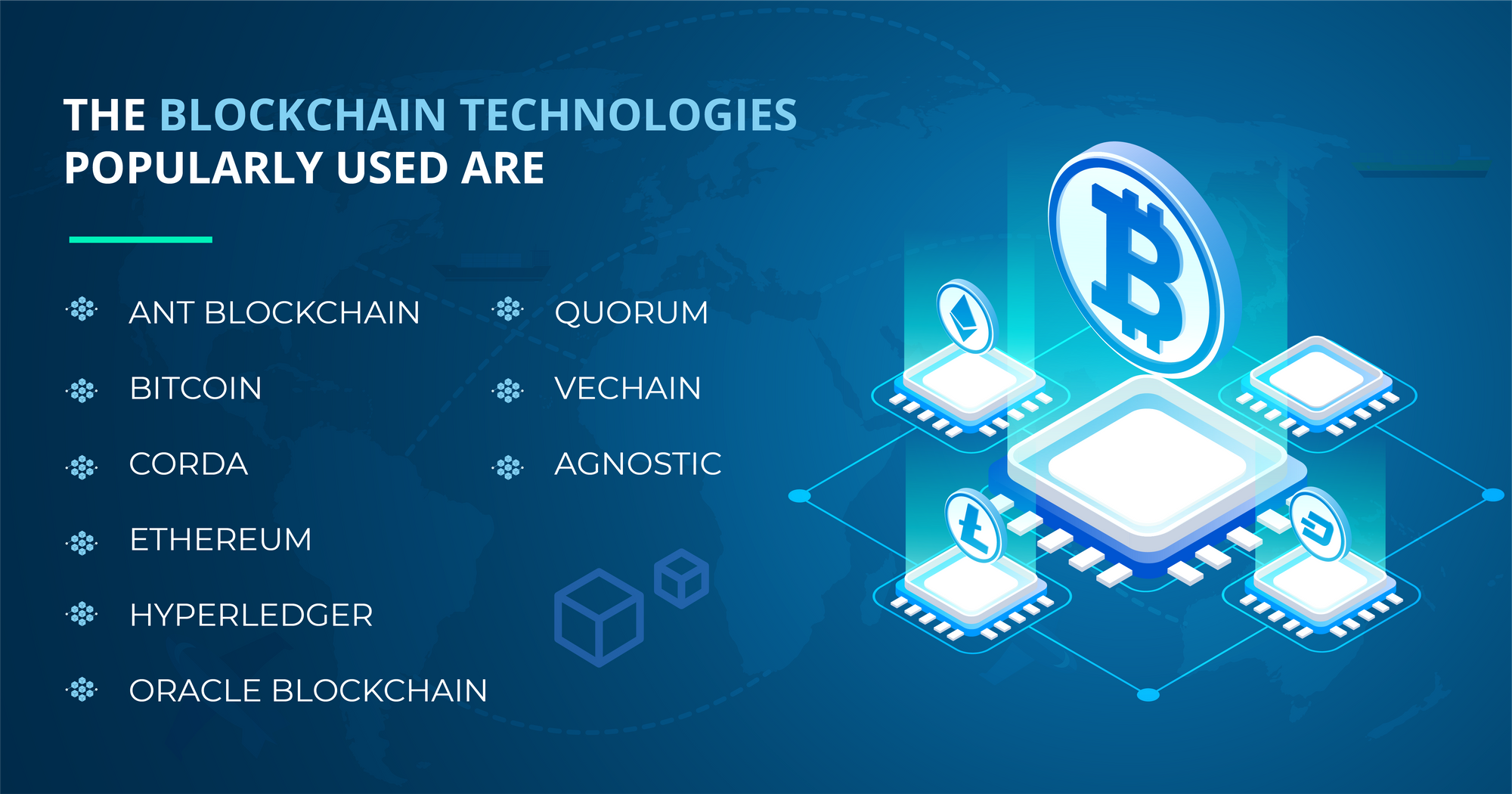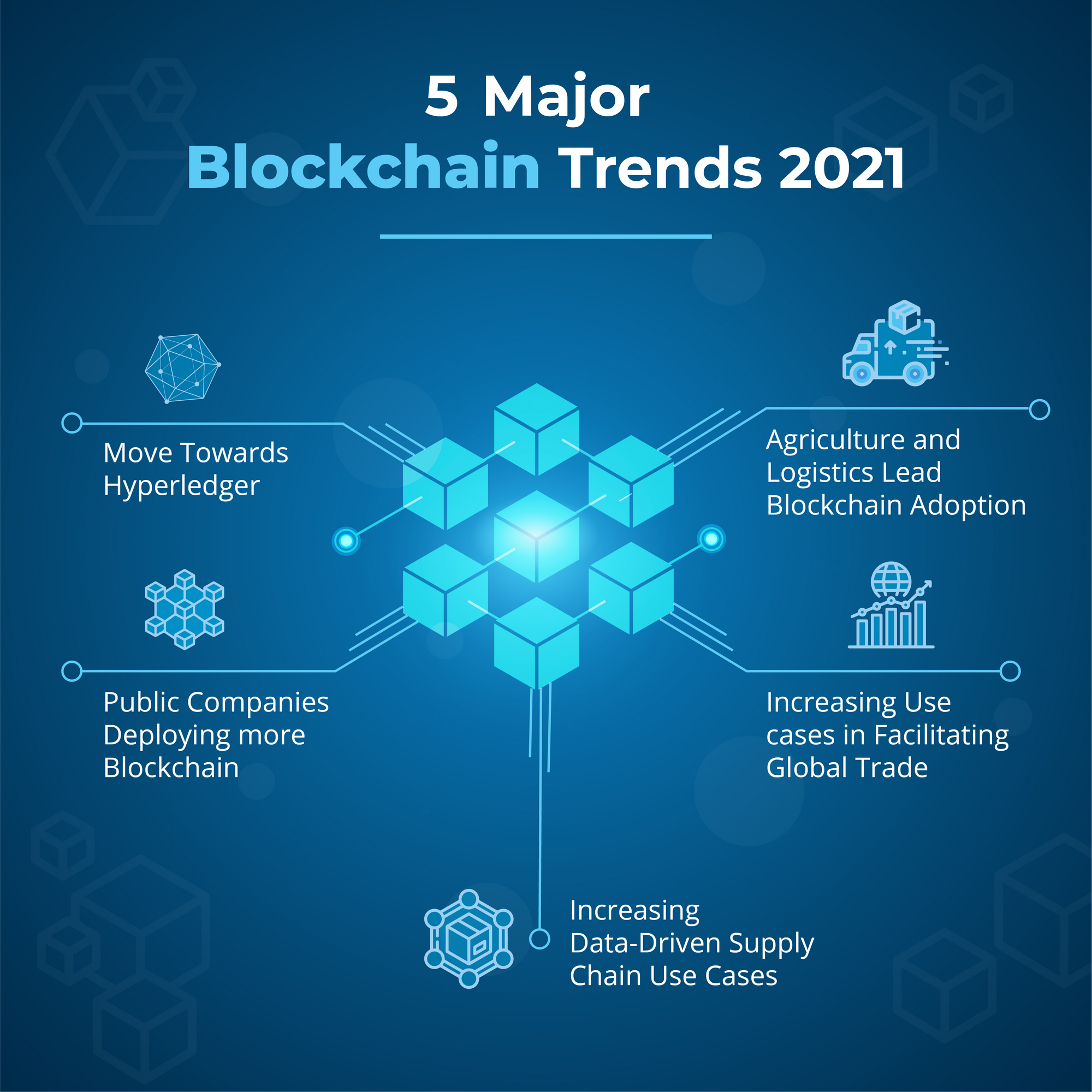The Covid-19 pandemic put the global supply chains at test and exposed their fragility. Consequently, we are seeing a rush towards digitization with emerging technologies to play a sterling role by enabling force for economic, business and social transformation.
With the power of transparency, providing a single truth to all members of its network, Distributed Ledger Technology (DLT) has the potential to disrupt business models and business processes and more.
Blockchain or DTL is essentially an electronic ledger with the virtues of decentralization, immutability, cryptography and smart contracts. DLT thus opens many horizons for innovation beyond traditional database technology.
Since Bitcoin captured the imagination of masses in 2008, DLT has been applied in financial services, supply chain, agriculture, e-commerce and more.
The most extensive use of blockchain has been found in the Agriculture/Grocery, and the Freight/Logistics sector. Also, another positive trend is the rise of public companies and consortia in deploying blockchain compared with startups.
Also, there is a change in blockchain adoption from Ethereum to Hyperledger. In this extensive article we unravel the major changes in the blockchain adoption and the most popular use cases.
Blockchain Trends in Logistic and Supply Chain Industry
Supply chain is the backbone of our present global economy and ensures smooth movement of goods from the producer to the consumer.
In this mammoth industry of $16 trillion, there are huge costs of frauds, errors, as well as administrative expenditures. Historically the industry has been pioneers in deploying automation, hence it is astonishing to know that at present there is a large degree of manual procedures and processes behind such operationally complex undertakings.
“Between East Africa and Europe it can take as many as 30 individuals and organisations along with involving 200 different types of interactions two ship refrigerated goods”
It’s astounding to know that the cost of processing the paperwork can be to the tune of 15% of the shipment cost (Groenfeldt, 2017).
This exposes the need for automation, and digital transformation apart from furthering the use of blockchain.
Supply Chain Application Areas:
Havre are the major areas Blockchain is making ripples in:

The blockchain technologies popularly used are:

Major Blockchain Trends 2021
Trends are the window into the future. These trends tell us about what the future will look like. In an interesting research done at the Centre for Blockchain Technologies, University College London, By Nikhil Vadgama and Paola Tasca, they analyse the advent of Blockchain in various segments of the supply chain.
The Agriculture/Grocery sector and the Freight/Logistics sector, and Financial sector have seen the most aggressive use of blockchain. We have discussed the trending use cases of blockchain in the article in the following section.
Trend #1 MoveTowards Hyperledger
The major blockchains adopted are Ethereum (23%), Hyperledger (21%) of all projects, Agnostic (13%), Did Not disclose or TBC (23%)
Here are a few significant trends and difference that can be attributed to the different nature of the blockchains:
- Startups prefer Ethereum by a long margin, 90%. Hyperledger has 45% projects with startups.
- Consortia and public companies prefer Hyperledger. Ethereum is a public blockchain and relatively easy to fundraise for with tokens; Hyperledger, on the other hand, is ideal for private usage and therefore fits use by enterprises, or public companies.
- Speaking of timelines, since 2018, Hyperledger the shift from Ethereum to Hyperleger can be seen occurring in 2018. The Freight/Logistics sector is an exception to this trend as the sheer complexity and involvement of cross-border transportation, requires the use of public blockchain and thus application of Ethereum.
Trend #2 Public Companies Deploying more Blockchain
In 2014, startups were the only companies who were enduring in blockchain, but its share fell to 33% in 2020 with more public companies coming to the fray to engage in projects, as well as consortia and government initiatives. Come 2019, public companies account for the majority at 40% of all projects.
Trend #3 Agriculture and Logistics Lead Blockchain Adoption
- With respect to sectors, Agriculture / Grocery dominates throughout all years and accounts for 40% of projects. Here is why: Food safety is paramount, and so is the ability to track and trace agriculture and grocery products. Many scandals in milk powder contamination, E-coli outbreaks (Casey and Wong, 2017) and meat substitution all have made the case for blockchain.
- Freight/Logistics is the second-largest sector accounting for 17% of all projects. The complexity of moving products simply makes blockchain indispensable on account of risk of frauds, errors and more. On top of that, paperwork costs as much as 15% of the entire transportation cost (Bajpai, 2017 and; Groenfeldt, 2017). The complexity and lack of efficiency simply pave the way for blockchain. Here are other insights:
- Within the supply chain, the greatest focus is in the product tracking/tracing area, given blockchain’s capability to coordinate and track information.
- Second is the application area of logistics, which involves more complexity and IoT and sensors to track information related to the goods’ physical movement.
- The area of financial transactions is also significant. This area should be expected to grow as tokenization of physical assets becomes more prevalent.
- Finally, it is interesting to see that the circular economy area is growing with its relative importance to sustainability.
- Retail operations have the least activity given the risks of dealing with end-consumers

Trend #4 Increasing Data-Driven Supply Chain Use Cases
While blockchain examples in the supply chain are still in short supply, there are an increasing number of supply chain management use cases for blockchain being investigated, including.
Top 5 Supply Chain Industry Use Cases
- Supply Chain Finance: The high efficiency of blockchain technology in processing invoicing along with more transparent and secure transactions makes it increasingly popular in supply chain finance. Blockchain technology allows for the use of smart contracts that trigger immediate payments as the product gets delivered.
- Supply Chain Logistics: Hackled with many go-betweens and tedious back and forth between partners, logistics experience significant operational friction. With blockchain, the transactions can be verified, recorded and coordinated autonomously without third parties. This eliminates an entire layer of complexity entirely.
- Supplier Payments: Blockchain technology promises to facilitate fast, secure, low-cost international payment processing services (and other transactions) through the use of encrypted distributed ledgers that provide trusted real-time verification of transactions without the need for intermediaries such as correspondent banks and clearing houses”. One example of supply chain blockchain for supplier payment is within the coffee industry. Bext360 is using blockchain technology to better track all elements of the worldwide coffee trade—from farmer to consumer—and thereby boost supply-chain productivity. Using cryptocurrencies, this application of blockchain in the supply chain ensures payment directly to the farmers immediately after their products are sold.
- Cold Chain Traceability: Critical supplies such as Food and Pharmaceutical benefit with blockchain as it facilitates the safe recording of the data from IoT sensors such as temperature, humidity, vibration and other environmental metrics be recorded safely and transparently. Smart congrats allow immediate redressal of any anomalous reading. Walmart uses this technology to track the provenance and condition of its pork products coming from China, and is extending the technology to others as well.
- Food Safety: Cross-contamination in complex supply chains is difficult to track and isolate. Delays can cause significant reputational damage as well as cost of recalls. Nestle, Walmart and Unilever and others are using blockchain to immediately identify the source of foodborne illness within the supply chain.
Trend 5 # Increasing Use cases in Facilitating Global Trade
Each day blockchain is finding new and new applications in facilitating global trade
- Shared Database: Blockchain, by connecting the vast global network of carriers, ports and customs authorities can ease a lot of pain by preventing errors, frauds and increasing transparency in operation along with reducing costs drastically. Different companies, which have to work together over a long supply chain, and with smart contracts, they can automatically process documents and contracts. This will result in processes being reduced by up to 90%.
- Product Certificate: The origin of high-quality goods is often based on paper certificates, which can be forged or lost. Fake drugs are also a known problem in the medical field. We can then use these public records to determine that the seller is the actual owner.
- Goods Tracking: Blockchain can be used to complement the existing IT of supply chains. In combination with sensors and IoT tools, companies can create unchangeable data points on the blockchain. As a result, the systems can track food and other goods through a transparent, superior and independent ledger.
- IoT Database: The Internet of Things (IoT) are devices or sensors with which data can be sent over the Internet. However, today’s internet architecture is not equipped for this amount of devices and data. In addition, individual servers represent a single point of failure and thus increase data security risks.
Blockchain is an effective solution to securely connect and manage a vast amount of IoT devices. And because Blockchain is based on a peer to peer network, there is no single point of failure. But to fulfill this use case, we need IoT devices and sensors that are not hackable. This is important so that only verified information is sent to the blockchain, and we therefore, can trust the data.
Welcome the New Dawn with Blockchain
The logistics and supply chain industry are one of the most promising industries for blockchain. There are many actors who do not trust each other and we have a lot of documentation and paperwork. With Blockchain, companies can use a shared database without trusting each other. In addition, contracts and documents across different companies can finally be digitalized with smart contracts. This will lead to a much more efficient process, lower costs and better customer satisfaction.
 All Posts
All Posts
